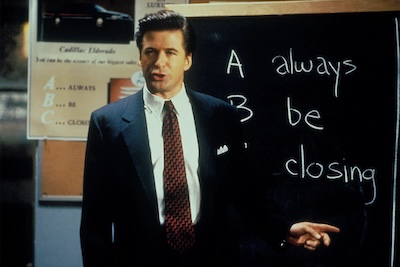The BAFTA-nominated short film, Marion, introduces us to a world we have only seen on television or from a distance. We might even be more familiar with the concept of bull fighting or images of a matador evading harm as a large animal whizzes by them. Directors Finn Constantine and Joe Weiland take those images and turn them on their head as we learn about the jaw-dropping art of bull-leaping, and we meet one woman who faces emotional danger in and outside of the arena.
The subject of bull-jumping is not something that these directors and friends were searching for, and Constantine reveals how he was captivated by videos he saw of the sport. He felt an instant connection.
“We weren’t aware of this culture in France,” Constantine admits. “To be brutally honest, I came across [this] in the bath while watching a documentary about extreme sports, which is very out of character for me. There was this tiny, small segment on this program on course landaise, and I immediately called Joe. We’ve been best friends for 25 years, and we’ve always spoken about making something together. I asked him to look at this sport, and we had this long conversation about how we were taken aback by the beauty and the pageantry of it but also by the bravery and the endurance. Once we did some research, we discovered Caroline [Noguès-Larbère]. The whole film is spawned from an interview where she says that she doesn’t just face the bulls but the men as well.”
When we see Marion enter the locker room for the first time, she is the only woman in the space. The camera slowly takes a lap to inform us, the audience, of everyone in her orbit. Men constantly come into the frame, as if to say that even the filming of this movie cannot be solely left to her. Do they want to say something cruel to her about her being there, but they can’t afford to say it? It shows us how she has to stay alert even when she isn’t face-to-face with a bull.
 “We used all the real team members in the film, so, to us, it was about recreating the atmosphere that she’s used to,” Weiland says. “We wanted that lap shot to really capture the movement and the energy, so that you really feel that she’s alienated in that space. The sound was very important there to create that sort of raucous atmosphere that’s like fizzing with this masculine energy. That scene acted as a contrast from the quite private scene in the bathroom before. Finn and I wanted to give the idea of two different spaces: one when she’s on her own and having a moment and then one where you see her having to get changed with all of these men. You’re on edge.”
“We used all the real team members in the film, so, to us, it was about recreating the atmosphere that she’s used to,” Weiland says. “We wanted that lap shot to really capture the movement and the energy, so that you really feel that she’s alienated in that space. The sound was very important there to create that sort of raucous atmosphere that’s like fizzing with this masculine energy. That scene acted as a contrast from the quite private scene in the bathroom before. Finn and I wanted to give the idea of two different spaces: one when she’s on her own and having a moment and then one where you see her having to get changed with all of these men. You’re on edge.”
When we see Marion enter the ring for the first time, it’s almost as if we can feel her heart beating. There are striking shots from above where we can see the beige, brown hue of the sand beneath all of their feet before we are yanked back into Marion’s point of view. How difficult is it to capture that electricity and translate it into Marion’s psyche?
“It’s all about claustrophobia for us,” Constantine says. “We wanted the surroundings and the men and the noise of the arena to almost be falling on top of her. That moment when she first walks out, there’s a sort of four or five shot sequence where it’s all very tight shots to her face. It was important that we didn’t really know exactly where we were until she got to the end and she stopped. Then we can pull back and the audience can grasp the space and understand what she’s about to face. That’s how you would feel, isn’t it? You would be internalizing things, and you wouldn’t know what was going on. You stop, look up, and you can see the scale of what is in front of you.
In working with our cinematographer, Harry Wheeler, we shot one time over thirty minutes live with seven different cameras in an almost documentary style. We tried to elevate it to cinema and be set uip with enoough cameras that we could, in the edit, come back and find the emotional beats with what we captured.”
There is a stunning, terrifying moment when Caroline’s Marion is knocked over by the bull in the ring. We are left breathless by the noise and when she picks herself back up. Weiland confirms that this was an unexpected moment caught on camera.
“That whole sequence was completely unplanned,” Weiland says. “We filmed a live bull-jumping performance as the ending, so we weren’t interfering with reality at all. Caroline doesn’t normally get hit by the bull, so that was very rare. That adds to the drama and the danger of that. Loads of people think that it’s a body double. Or they ask if we had a fake bull–we’ve heard some crazy theories. But, no, that was a real moment. You can’t stage that level of danger”
“You can’t direct a bull,” Constantine adds, with a laugh. “That was the film that we wanted to make, though. We wanted to make this film about Caroline, so there was no other option than having the second half of the film be live, be tangible, and see her actually perform. That’s the heartbeat of the film.”
The act of picking herself back up is not just for Marion’s safety, but a representation of a woman defying those who count her out. There is a ferocity in that. In order for others to follow in her footsteps, Marion must show no fear.
“She has to go again for herself and for her child, who she doesn’t know is watching,” Constantine says. “It’s the sake of the whole journey–there’s no other option. She matches the bull, in that sense.”









